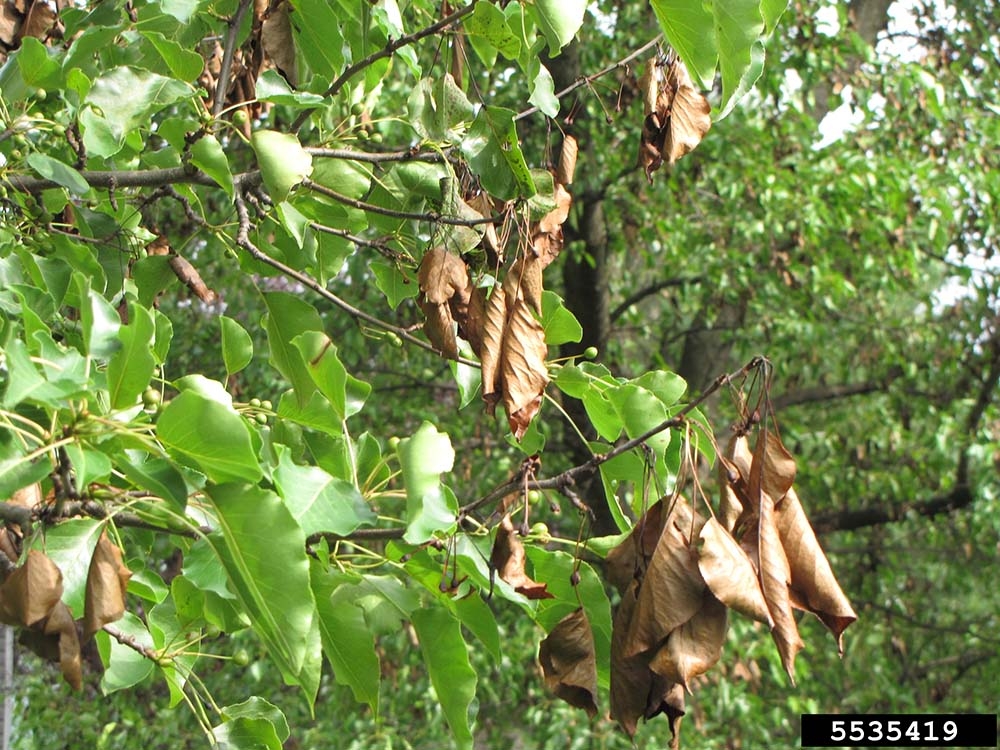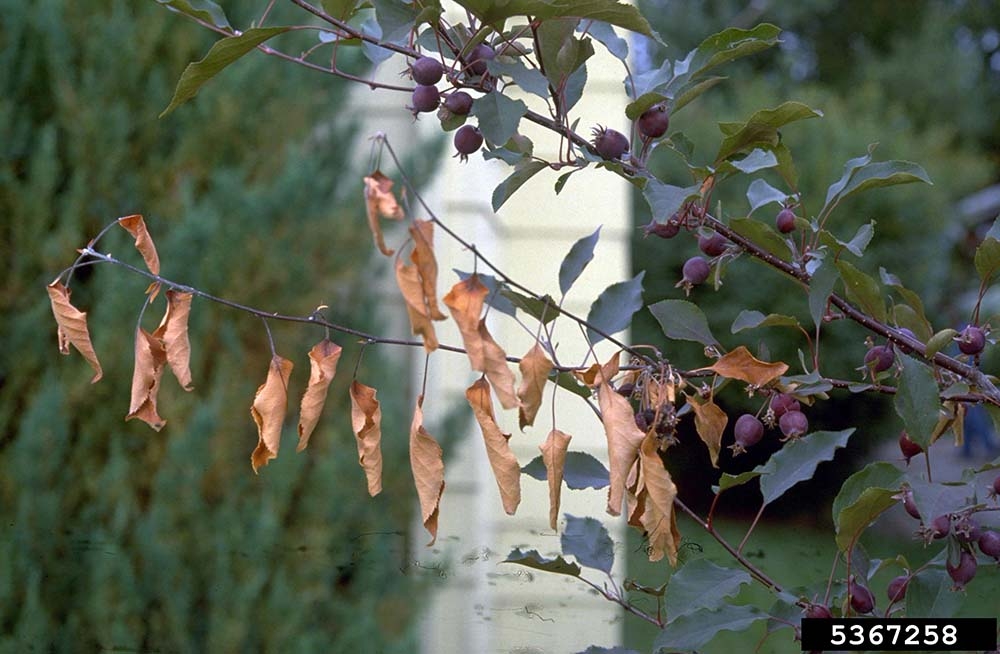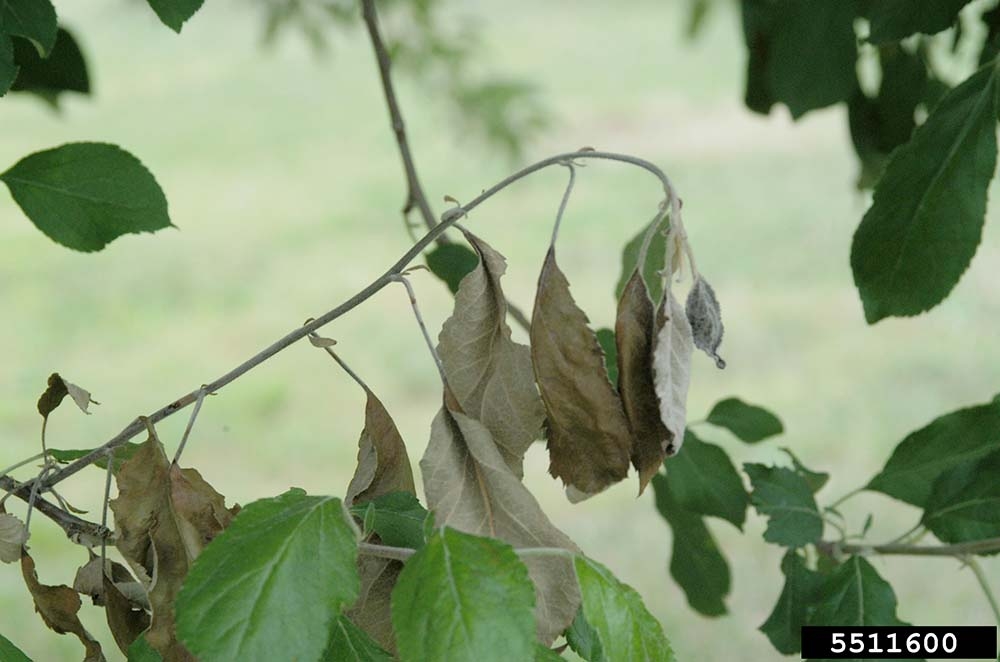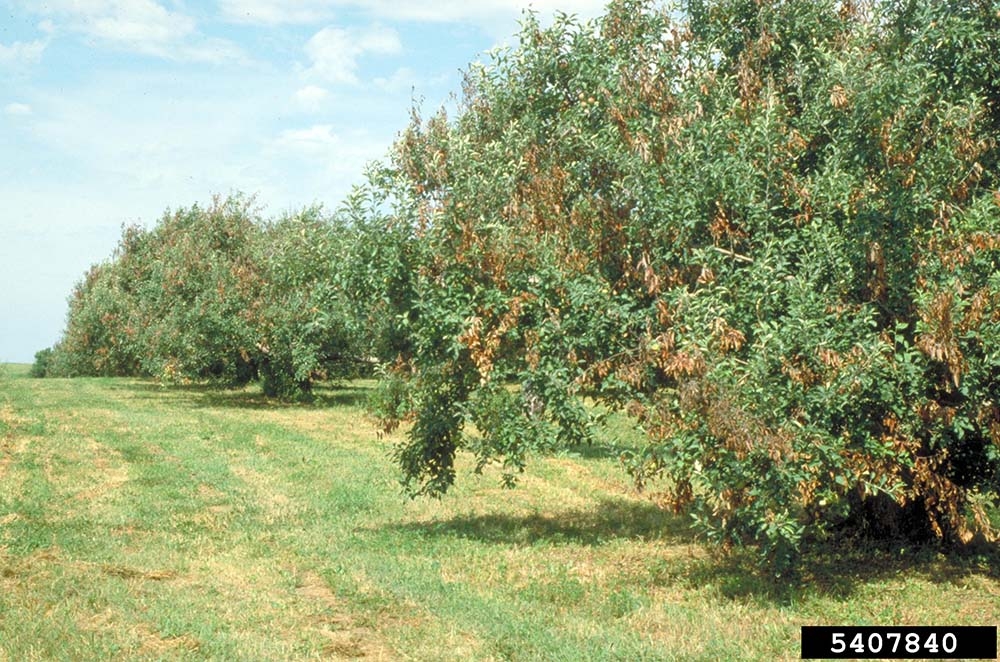Fire Blight: A Cantankerous Disease
Every now and then, I come across a pear or apple tree that has small branches that look like they have been blasted by a torch. Fire blight, as this disease is known, is rampant, and can cause a lot of damage to many loved flowering trees.
Fire blight is a disease caused by Erwynia amylovora – a bacteria that enters flowers and other openings of many pome fruit plants. These hosts, which are plants that can be infected with this disease, include susceptible varieties of pear (Pyrus spp.); apple and crabapples (Malus spp.); quince (Cydonia spp.) and firethorn (Pyracantha spp.). Depending on the severity of the disease, it can cause loss of twigs and fruit, branches or in severe cases, the death of the plant.
Fire blight is most easily recognized by the “shepherd’s crook” – a curling of the tip of small twigs – and the browning of foliage that looks like it’s been toasted over a flame. In larger branches, cankers develop, resulting in sunken areas along the surface under the bark. Come winter, the branches that have been infected remain attached, giving the tree the appearance of having been burnt in a fire.
In the spring, bacteria begin oozing from the cankers and previously infected areas. The bacteria enter the plant through small openings called stomates or through the flowers. Once inside, the bacteria begin to multiply, eventually killing the infected part of the plant.
Unfortunately, once a tree is infected with fire blight, it is very difficult to get complete control of this disease. Pruning six to twelve inches below the most visible point of the canker can help, but should be done in the winter, when the bacteria are dormant. It is also important to sanitize your tools while doing so, as the bacteria will transfer between cuts. To sanitize, use a common household cleaner in a 10% solution and wash your pruners off with the solution in between cuts.
Chemical controls are an option, but they are costly and less effective for homeowners. In a large orchard operation, they might be considered, but are not on smaller scales.
Fire blight is a complicated, frustrating disease to manage. With symptoms that look like a fire burned branches of trees, it causes unsightly damage that is hard to control. Fortunately, it only causes death in extreme infections and can be managed with a little winter management.




Add new comment